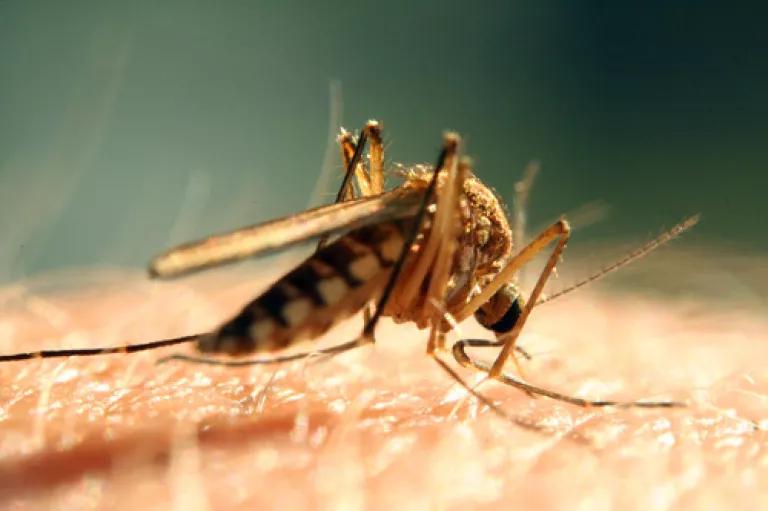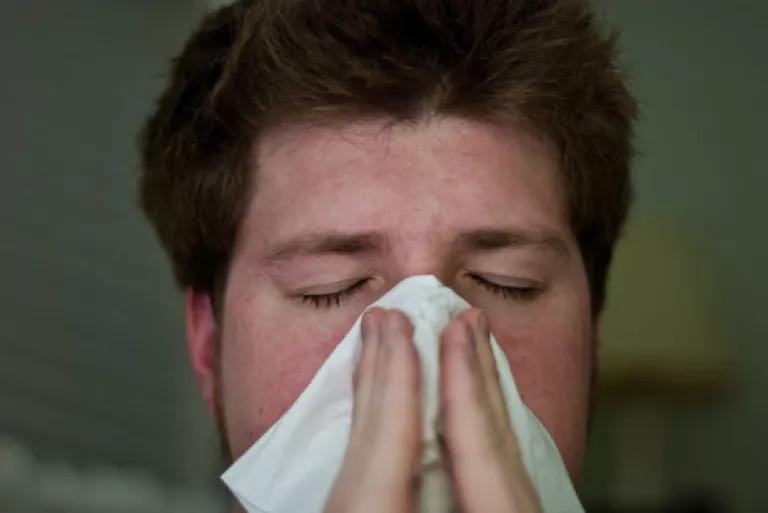
Labor Day’s almost here, but summer isn’t quite over yet. Many of us can look forward to enjoying more days outdoors with friends and family. But thanks to the impacts of a changing climate, it’s even more important to take precautions to help keep those days healthy – because the heat, the bugs, and certainly pollen season are still in full swing in much of the country.
- The heat: Students headed back to school are getting sent back home, as searing temperatures in Midwestern states, coupled with schools without air conditioning, put kids’ health at risk. Ninety people at the Minnesota State Fair were treated for heat-related illnesses. This past July, many states saw highways buckle in the extreme heat. In Indianapolis, firefighters had to evacuate 300 residents of a senior home to protect their health from the heat. The EPA warned that the hot temperatures were making air pollution worse in New England during the week of July 15th.
(photo credit: jenny downing via photopin cc)
We’re all susceptible to extreme heat. It’s super-hard on people with kidney stones, or with migraine headaches, and makes ground-level ozone air pollution – the main component of smog – measurably worse. But remember, the heat and air pollution is hardest on the most vulnerable people: those age 65 and older, young children, people with heart or lung illnesses, and economically disadvantaged households. We shouldn’t assume everyone can stay cool these days either: many Americans don’t have home air conditioning, or can’t afford to run it. A CDC study of heat-related deaths in a 2012 US heat wave estimated that 16% of those who died had an air conditioner, but it wasn’t turned on. And 63% didn’t have any air conditioning at all. Half of the heat fatalities were age 65 and older.

The bugs: Eight cases of dengue fever were recently reported in southeastern Florida, and dengue hospitalizations in the U.S. have tripled from 2000 to 2007. Be grateful if you’ve never heard of dengue, a painful viral illness known to many international travelers.
(photo credit: bogdog Dan via photopin cc)
It can be passed from person to person by infected mosquitoes. Dengue infections hit an estimated 100 million people worldwide in the tropics and subtropics each year, with high fever, rash, and terrible joint and muscle pains; some 22,000 people die. Those eight Florida cases this year may not sound like a lot, but they were likely transmitted locally, which means carried by infected Florida mosquitoes that bit their unfortunate human victims. There were 28 locally-acquired dengue cases in Florida in 2009 and 2010; hundreds of locally-transmitted cases in Texas and Hawaii in recent years; and 2010 saw the largest outbreak in Puerto Rico’s history.
Author Linda Marsa has just penned a terrific new book, Fevered, which details how dengue fever has reached into North America and how climate change has a hand in the spread of the mosquito that can carry it. This book describes climate-health effects through the eyes of the people affected and interviews researchers who are looking closely at those connections, offering stories about ways that communities are getting climate-prepared and designing plans to thrive. I’ve had a chance to talk with Linda about dengue fever and her new book is a great resource.

Pollen season: It’s almost September, and if you’re among the tens of millions of Americans with ragweed pollen allergies, here comes the double-whammy season for you. Ragweed pollen production is in full swing now across much of the US, and warmer temperatures mean longer seasons when those pesky plants can pump pollen into the air. (photo credit: William Brawley via photopin cc)
One study in a swath of midwestern North Americas found that ragweed pollen season has lengthened by up to 27 days in just the last 15 years. But with summer heat still upon us, ozone smog is also peaking in many parts of the nation: the double whammy.
- Let’s connect the dots here: All three of these summertime companions – heat, bugs, and plants - are being affected, right here and right now, by climate change. Heat waves far too often aren’t mere inconveniences – they kill people. And climate change fuels longer, hotter, and more frequent heat waves. Rainfall and temperature patterns are changing in ways that are allowing the dengue fever “vectors” – mosquitoes that can transmit this painful viral illness – move into new areas of the US. And carbon dioxide, the number one form of carbon pollution we produce, actually makes ragweed plants grow lusher and produce more pollen. And warming weather lets ragweed plants pump their pollen into the air (and find its way into your airways) for days or weeks longer.
- Let’s connect the dots again: When we limit heat-trapping carbon pollution that causes climate change – and the EPA has proposed to do just that -- we take a giant step forward to create healthier, more climate-secure communities for ourselves and our kids—a future that will be less ravaged by ever-increasing extremes of weather. Climate change is a matter of health, and we stand to gain enormously by making climate change preparedness a top priority. You can take all kinds of simple steps at home this weekend to keep healthy: NRDC has information on heat, dengue fever, and ragweed pollen and other air pollutants affected by climate change.
- And you can tell the EPA and President Obama thanks for looking ahead and helping to make a healthier future for our kids, by making a plan to limit America’s biggest sources of carbon pollution.
Labor Day seems not to be the end of summer anymore, and that might make it the perfect time to think about what more you can do to keep connecting the climate-health dots all year long.
